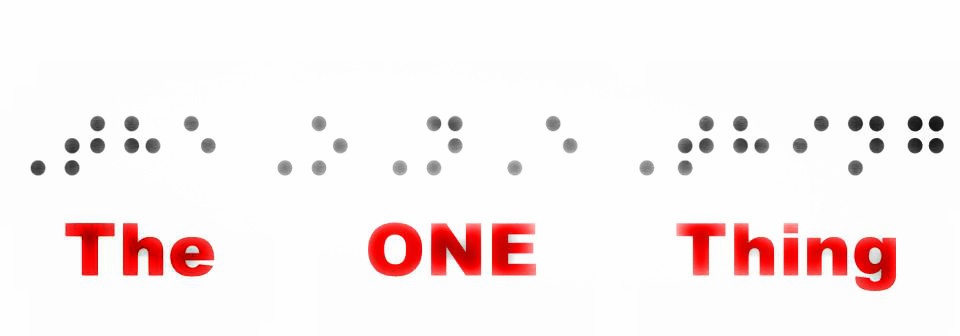As the next nod in our All Things ONE series we’re connecting the dots between ONE person who spent his entire life focused on ONE Thing – and it changed the world.
Louis Braille wasn’t born blind, but an accident while playing in his dad’s workshop took his eyesight at the age of three. As he grew up, he struggled with traditional schooling even during his time at the Royal Institute for Blind Youth. Luckily, a chance encounter with a former soldier at age 12 helped him to see a whole new approach to communication for the blind.
ONE Person who Opened His Eyes
When Charles Barbier, a former member of the French Army, was asked to demonstrate a form of communication called “night writing,” at the Institute for Blind Youth, he changed the course of Louis Braille’s life. Charles’ complex code, known as “Ecriture Nocturne” was invented to allow soldiers to quietly correspond with one another on the battlefield at night. It used thick embossed paper to house a series of as many as twelve dots and dashes representing every symbol of the alphabet. However, each of the symbols were too large to read on a single fingertip, which caused user error. While the code had serious flaws, it showed Louis that it was possible to transfer information without the use of his eyes. Welcome the infancy of braille.
Perfecting ONE Technique
Louis filled every spare minute with creating and improving his own raised-dot code. He worked to simplify Barbier’s code, and by the time he was 15, he had transformed it into a functional six-dot format – at the same time, removing the dashes and shrinking the symbols to better fit on a single fingertip. But he didn’t stop there. Louis continued to tweak his system, and by the time he was 20, he had published the first-ever braille book. By the time he was 28, he added symbols for math and music.
ONE Life Changing Event
Though Louis’ ONE Thing was clear, the Braille System was slow to be adopted by others – even the school for the blind. But, at the institute’s dedication to its new building in 1844, that all changed. During a demonstration, one student read a poem written in braille. After he was finished, as second student entered the room unaware of what had just taken place. He recited the same poem from the same braille. Audience members were impressed, as this ONE event finally proved the extraordinary usability of Louis’ system.
Extraordinary Results
Louis’ determination for developing an easy-to-use method of communication paid off, and braille became the official language of the blind in 1932. Still used worldwide today, it is thanks to Louis Braille’s lifetime focus on ONE Thing that the visually impaired continue to advance in education and and gained independence.
Who do you know whose ONE Thing changed the world? Please share below with #theONEthing to be featured in the social buzz at The1Thing.com.

